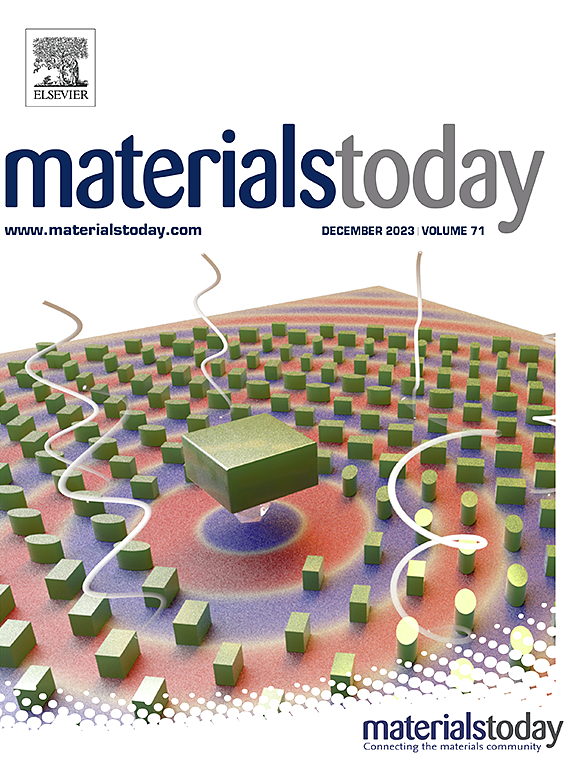Diatomaceous cross-species constructs for tendon-to-bone regeneration
IF 21.1
1区 材料科学
Q1 MATERIALS SCIENCE, MULTIDISCIPLINARY
引用次数: 0
Abstract
Diatoms, the typical marine algae with autotrophic oxygen generation and siliceous frustules, are anticipated to address the current obstacle of oxygen deprivation, cellular dysfunction, and repair imperfection in most intricate damaged tissues. Here, we are motivated to apply the Chaetoceros species, an ancient diatom, to an engineered cross-species domesticator for challenging tendon-to-bone injuries. This construct augmented the osteotendinous differentiation of tendon stem/progenitor cells, stamped by the silicon ions released from frustules and the up-regulated oxygen through photosynthetic behavior. The biocompatibility was at the forefront without adverse effects on rat subcutaneous models. The construct promoted hypoxia alleviation and locomotion recovery of rotator-cuff-torn (RCT) rat models. Pre-differentiated constructs induced by sacrificial diatoms displayed superb interface maturation in RCT rabbit models. The photosynthesis and inorganic ion interactive regeneration within a cross-species construct permits the creation of such a diatom-derived artificial domesticator, promising a paradigm shift towards the accomplishment of state-of-the-art regeneration comparable to natural tissues.

用于肌腱到骨再生的硅藻跨种构建物
硅藻是一种典型的海洋藻类,具有自养氧生成和硅质结缔组织,有望解决当前缺氧、细胞功能障碍和修复最复杂受损组织缺陷的障碍。在这里,我们的动机是将毛藻,一种古老的硅藻,应用于一个工程的跨物种驯化动物,以挑战肌腱到骨的损伤。这种结构增强了肌腱干/祖细胞的骨腱分化,通过光合作用行为释放硅离子和上调氧。生物相容性在大鼠皮下模型中处于领先地位,无不良反应。该结构促进了大鼠肩袖撕裂(RCT)模型的缺氧缓解和运动恢复。牺牲硅藻诱导的预分化结构在RCT兔模型中表现出极好的界面成熟。跨物种结构中的光合作用和无机离子相互作用再生允许创造这样一种硅藻衍生的人工驯化物,有望实现与自然组织相当的最先进再生的范式转变。
本文章由计算机程序翻译,如有差异,请以英文原文为准。
求助全文
约1分钟内获得全文
求助全文
来源期刊

Materials Today
工程技术-材料科学:综合
CiteScore
36.30
自引率
1.20%
发文量
237
审稿时长
23 days
期刊介绍:
Materials Today is the leading journal in the Materials Today family, focusing on the latest and most impactful work in the materials science community. With a reputation for excellence in news and reviews, the journal has now expanded its coverage to include original research and aims to be at the forefront of the field.
We welcome comprehensive articles, short communications, and review articles from established leaders in the rapidly evolving fields of materials science and related disciplines. We strive to provide authors with rigorous peer review, fast publication, and maximum exposure for their work. While we only accept the most significant manuscripts, our speedy evaluation process ensures that there are no unnecessary publication delays.
 求助内容:
求助内容: 应助结果提醒方式:
应助结果提醒方式:


